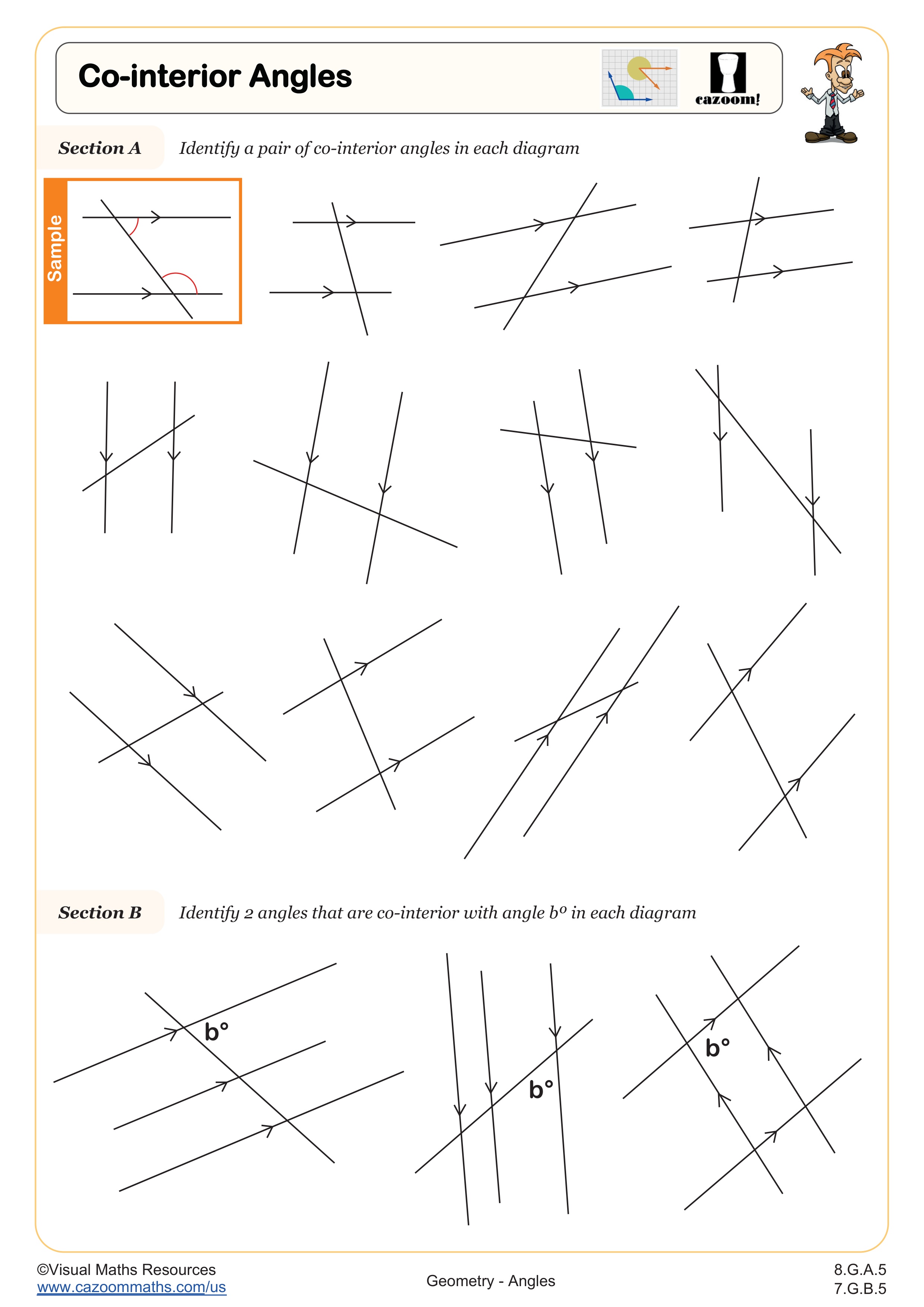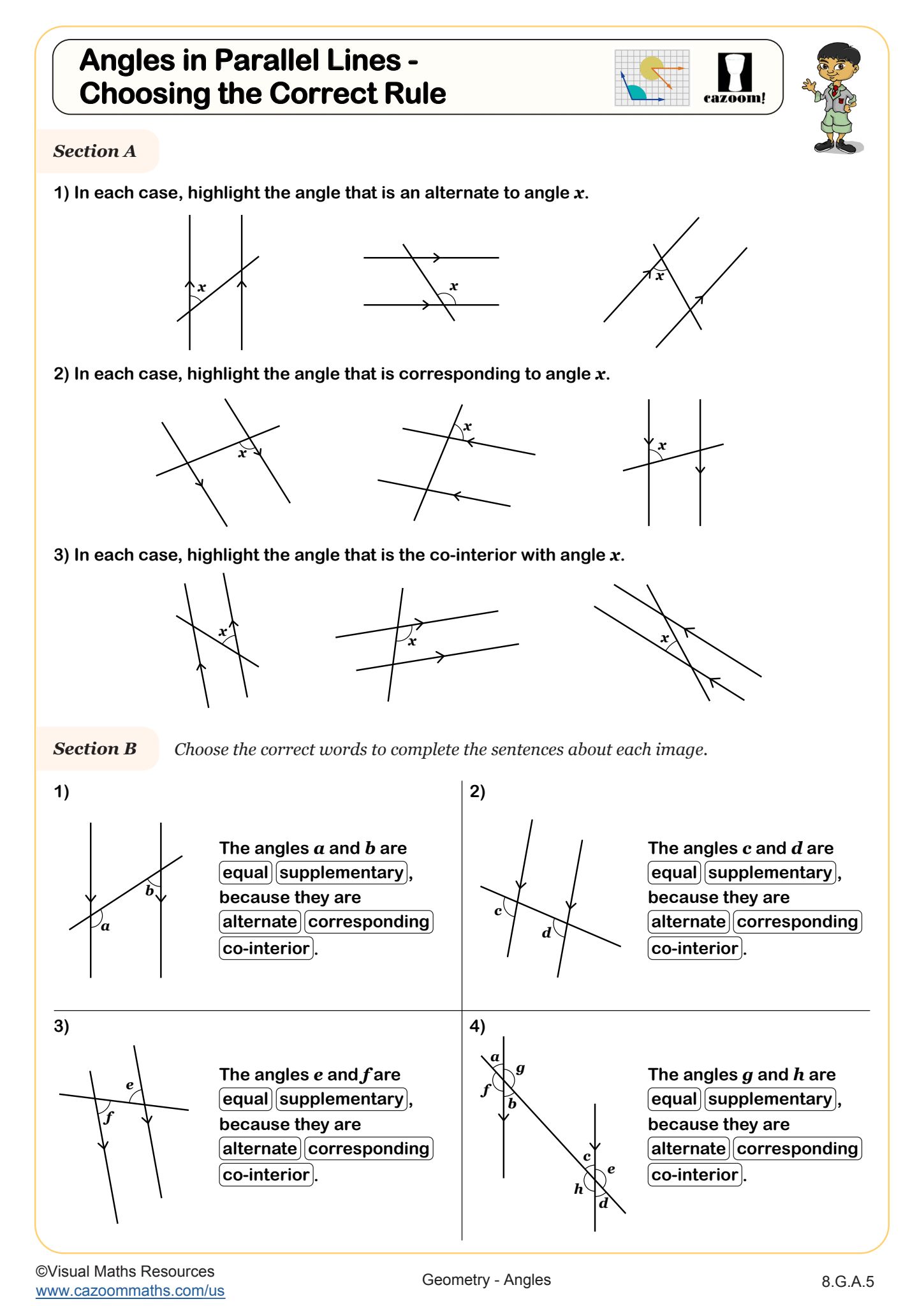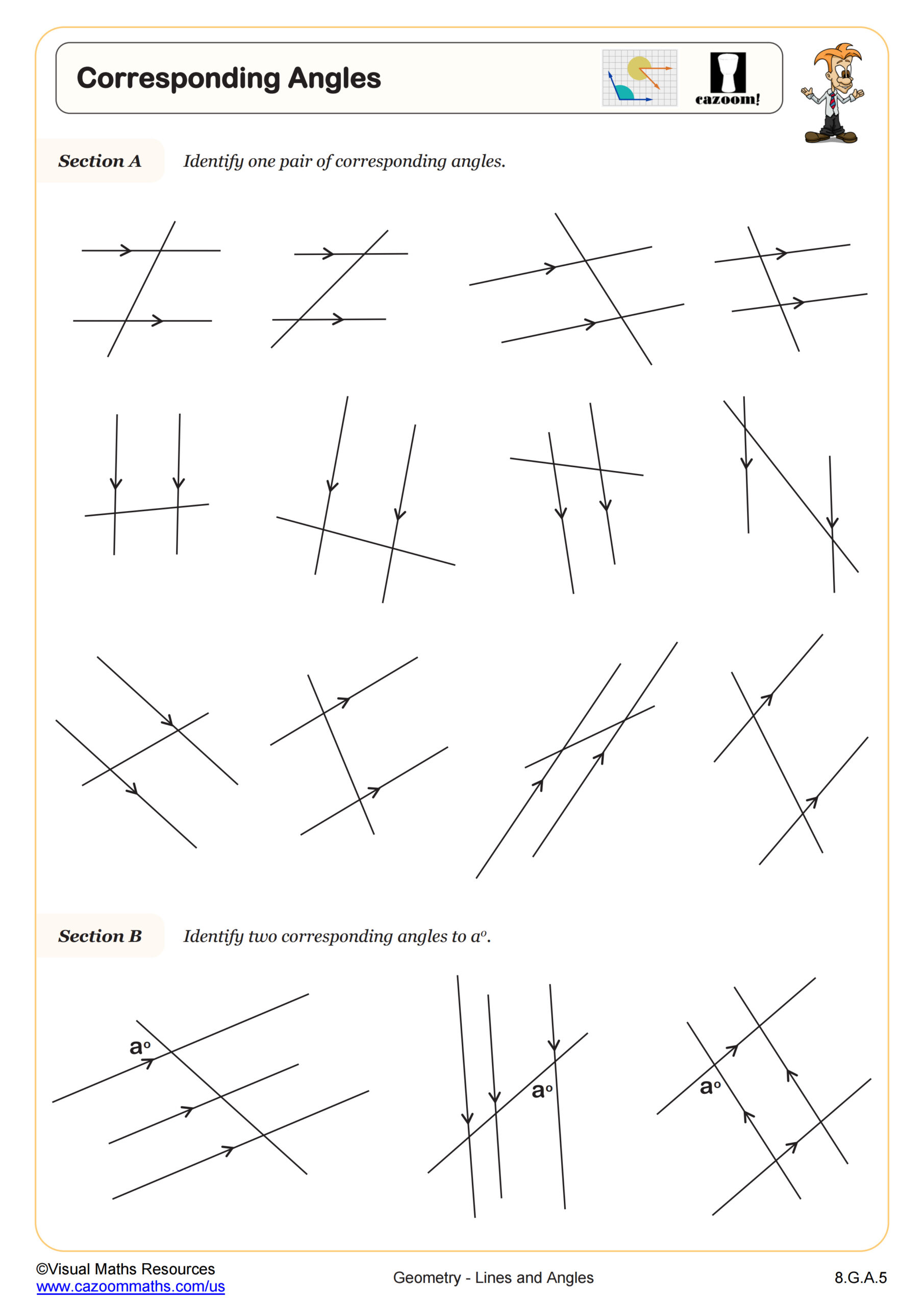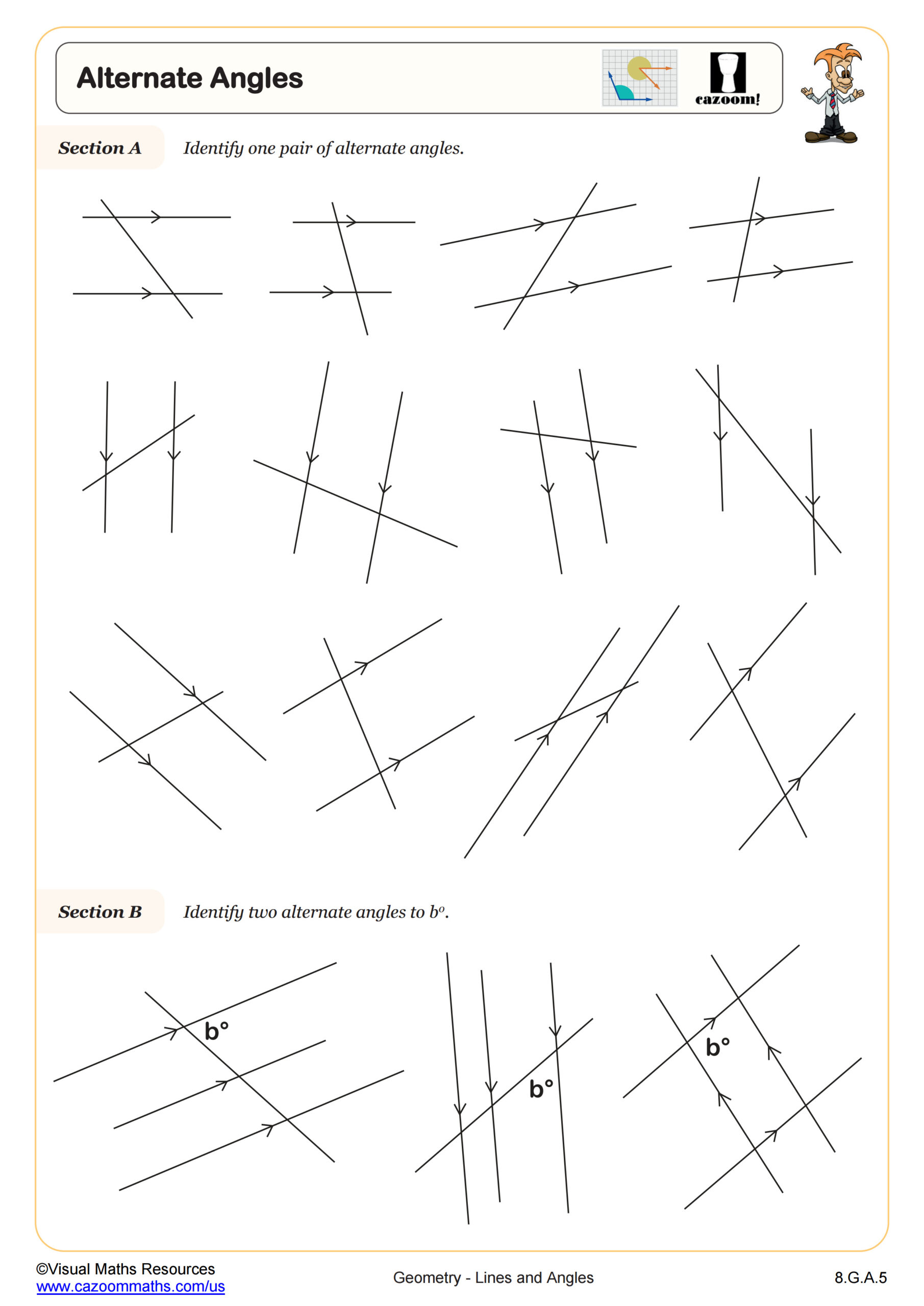Co-interior Angles WORKSHEET
Suitable for Grades: 7th Grade, 8th Grade
CCSS: 7.G.B.4, 8.G.A.5
CCSS Description: Know the formulas for the area and circumference of a circle and use them to solve problems; give an informal derivation of the relationship between the circumference and area of a circle.
Use informal arguments to establish facts about the angle sum and exterior angle of triangles, about the angles created when parallel lines are cut by a transversal, and the angle-angle criterion for similarity of triangles. For example, arrange three copies of the same triangle so that the sum of the three angles appears to form a line, and give an argument in terms of transversals why this is so.
Use informal arguments to establish facts about the angle sum and exterior angle of triangles, about the angles created when parallel lines are cut by a transversal, and the angle-angle criterion for similarity of triangles. For example, arrange three copies of the same triangle so that the sum of the three angles appears to form a line, and give an argument in terms of transversals why this is so.
Co-interior Angles WORKSHEET DESCRIPTION
This worksheet is the perfect place to start when introducing co-interior angles to your learners as it is often difficult for students to distinguish between corresponding, alternate, and co-interior angles. Faced with multiple images of pairs of parallel lines and transversals, students will identify one pair of co-interior angles on each diagram. Section A consists of twelve such images.
In section B this concept is built on as three images of either two or three parallel lines, have one angle labeled and learners will identify two angles which form a co-interior pair with each one.
Now try our worksheets “Corresponding Angles” and “Alternate Angles”.
In section B this concept is built on as three images of either two or three parallel lines, have one angle labeled and learners will identify two angles which form a co-interior pair with each one.
Now try our worksheets “Corresponding Angles” and “Alternate Angles”.




